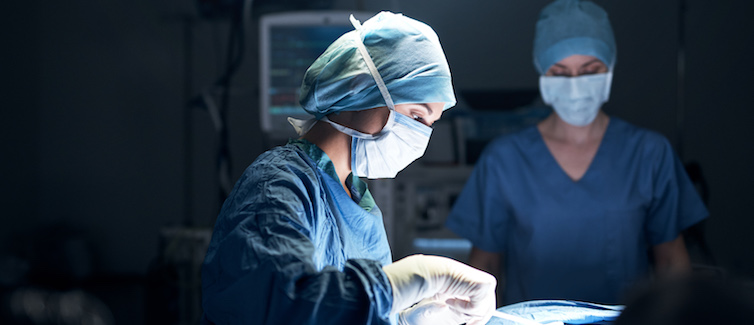Heart and vascular care is undergoing rapid transformation, and UPMC Heart and Vascular Institute at UPMC Pinnacle Harrisburg stays at the forefront. One example is new, state-of-the-art equipment in both the cardiovascular catheterization lab and hybrid operating room. The technological advances of the imaging system in these rooms improves the cardiologists’ and cardiovascular surgeons’ abilities to see inside the intricate structures of the heart and vascular system. And the better they can see, the more effective they can be.
Never Miss a Beat!
Subscribe to Our HealthBeat Newsletter!
Thank you for subscribing!
You can now select the specific newsletters you'd like to receive.
You are already subscribed.
Subscribe to more newsletters in our email preference center.
Sorry, an error occurred. Please try again later.
Get Healthy Tips Sent to Your Phone!
UPMC Heart and Vascular Institute at UPMC Pinnacle
“We are seeing more patients coming into our cardiac catheterization labs, and this world-class equipment will allow us to better address their circulation issues, whether they are a heart artery blockage or a leg artery blockage,” said William Bachinsky, MD, FACC, FSCAI, director of the cardiac and vascular interventional program at UPMC Heart and Vascular Institute at UPMC Pinnacle.
When opening an artery blockage in the catheterization lab or replacing a heart valve in the hybrid operating room, the heart specialist injects fluoroscopic material into the patient so that the blockage can be seen on an x-ray while the procedure is performed.
With this new tool, “the x-ray machine is best in class, and on top of that, we have fusion capabilities,” said Hemal Gada, MD, MBA, president of UPMC Heart and Vascular Institute at UPMC Pinnacle and medical director of the structural heart program. Fusion means that heart specialists take computed tomography, or CT, scans that were done prior to the procedure and basically lay them on top of the x-rays they are using during the procedure to better see the blockage.
“That will allow for more precise treatment and better outcomes for the patient,” noted Dr. Bachinsky. “This will be especially effective for complex cases such as patients with 100% blockages, which are more difficult to find and to open.”
The new equipment also means less radiation for the patient and physician who is performing the procedure.
“UPMC Pinnacle continues to invest in the well-being of our community, bringing best-in-class technology,” explained Dr. Gada. “For many years, we’ve been making groundbreaking clinical trials and new and effective therapies available first to the people of central Pennsylvania. And now, this type of room in this type of setting complements that very nicely. We’re geared to provide the safest and most effective form of care.”
About Heart and Vascular Institute
The UPMC Heart and Vascular Institute has long been a leader in cardiovascular care, with a rich history in clinical research and innovation. As one of the first heart transplant centers in the country and as the developer of one of the first heart-assist devices, UPMC has contributed to advancing the field of cardiovascular medicine. We strive to provide the most advanced, cutting-edge care for our patients, treating both common and complex conditions. We also offer services that seek to improve the health of our communities, including heart screenings, free clinics, and heart health education. Find an expert near you.
